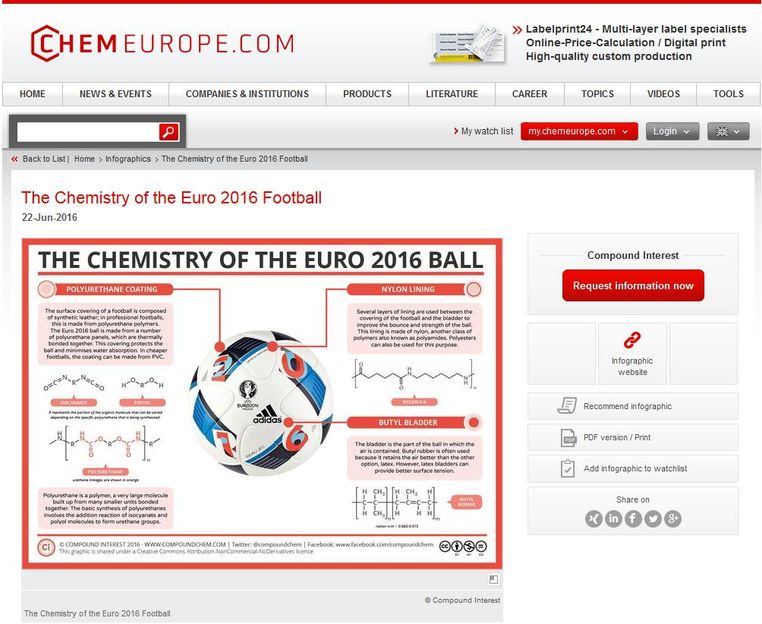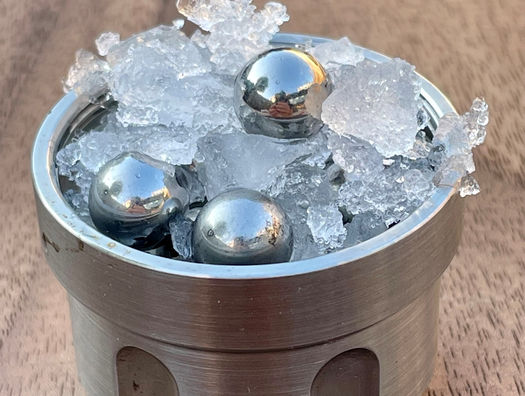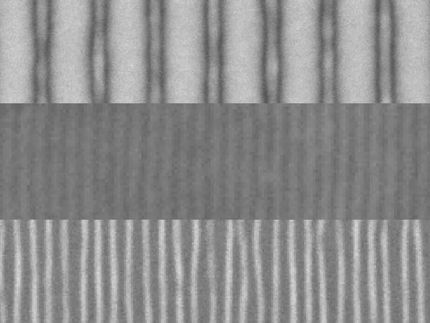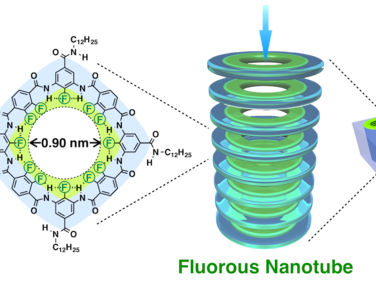Self assembled nanostructures for hostile environments
Scientists at Tokyo Tech have developed a new self-assembled nanostructure that can survive very hot or saline environments
nanostructures that assemble themselves from polymer molecules could prove to be useful tools in chemistry and industry. However, it is difficult to develop structurally robust self-assembling materials because they are often adversely affected by their surroundings.
Many natural organisms have evolved to protect themselves in hostile environments. For example, types of archaea - single-cell microorganisms living in hot springs - have cyclic molecules in their cell membranes that form shields to preserve the cell under extreme heat.
Inspired by nature’s use of cyclic structures, Takuya Yamamoto and co-workers at the Department of Organic and Polymeric Materials, Tokyo Institute of Technology, have dramatically enhanced both the thermal and salt stability of self-assembling polymeric structures, simply by changing the shape of the founding polymers from linear to cyclic.
The team designed new block copolymers - structures comprising several polymers connected by covalent bonding - which self-assembled into shapes called micelles. Micelles have a hydrophilic (water-attracting) outer membrane, and a hydrophobic (water-repelling) core.
“We designed a cyclic amphiphilic block copolymer by mimicking fat molecules in the cell membrane of archaea,” explains Yamamoto. “Both linear and cyclic copolymers were then used to create identical self-assembling flower-shaped micelles.” The team discovered that although the chemical composition, concentration and dimensions of micelles built from the two differently shaped block copolymers remained the same, the cyclic-based micelles were able to withstand higher temperatures.
“The micelle from cyclic block copolymers withstood temperatures up to 40°C higher than the linear-based micelles,” explains Yamamoto. The researchers found that the tail ends of the linear copolymers were more likely to break loose from the flower-shaped structure during heating, allowing for bridging between micelles to occur. This meant that the micelles join together in an agglomerate blob at a relatively low temperature. The micelles created by the cyclical copolymers, on the other hand, had no ‘loose ends’ to form bridges, meaning the structures remained stable up to far higher temperatures.
The same structural differences allow for a greater tolerance of salt concentrations in the cyclic-based micelles. The loose tails in linear-based micelles allowed rapid dehydration to occur in highly saline environments, whereas the closed cyclic structures are structurally stronger, making them more resilient to salt.
“The combination of higher salting-out concentrations and thermal resistance means these micelles have numerous potential applications,” explains Yamamoto. “Possibilities include drug delivery systems, where heating is not possible and salt provides an alternative method for controlling how a micelle responds in order to release a drug.” The team also hope that their micelles could provide the basis for many new materials in the field of green chemistry, because their structural robustness is based purely on their shape rather than on complex chemical reactions.
Original publication
S. Honda et al. Topology-directed control on thermal stability: micelles formed from linear and cyclized amphiphilic block copolymers. JACS Communications, published online July 2010
S. Honda et al. Tuneable enhancement of the salt and thermal stability of polymeric micelles by cyclized amphiphiles. Nature Communications 4, Mar 2013
Most read news
Original publication
S. Honda et al. Topology-directed control on thermal stability: micelles formed from linear and cyclized amphiphilic block copolymers. JACS Communications, published online July 2010
S. Honda et al. Tuneable enhancement of the salt and thermal stability of polymeric micelles by cyclized amphiphiles. Nature Communications 4, Mar 2013
Topics
Organizations
Other news from the department science
These products might interest you

Spinsolve Benchtop NMR by Magritek
Spinsolve Benchtop NMR
Spinsolve is a revolutionary multinuclear NMR spectrometer that provides the best performance

Eclipse by Wyatt Technology
FFF-MALS system for separation and characterization of macromolecules and nanoparticles
The latest and most innovative FFF system designed for highest usability, robustness and data quality

HYPERION II by Bruker
FT-IR and IR laser imaging (QCL) microscope for research and development
Analyze macroscopic samples with microscopic resolution (5 µm) in seconds

Get the chemical industry in your inbox
By submitting this form you agree that LUMITOS AG will send you the newsletter(s) selected above by email. Your data will not be passed on to third parties. Your data will be stored and processed in accordance with our data protection regulations. LUMITOS may contact you by email for the purpose of advertising or market and opinion surveys. You can revoke your consent at any time without giving reasons to LUMITOS AG, Ernst-Augustin-Str. 2, 12489 Berlin, Germany or by e-mail at revoke@lumitos.com with effect for the future. In addition, each email contains a link to unsubscribe from the corresponding newsletter.
Most read news
More news from our other portals
Last viewed contents

Swiss start-up Oxyle commissions first complete PFAS destruction system - Key milestone for Oxyle: the company scales its solution to solve PFAS problems on an industrial scale around the world

High-precision control of nanoparticles for digital applications

Information Nibbles for the Half-Time Break! - CHEMIE.DE explains science in everyday life using easy-to-understand infographics



























































